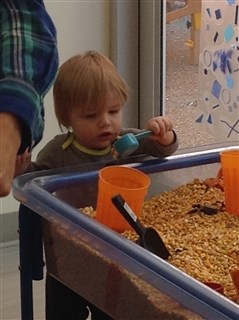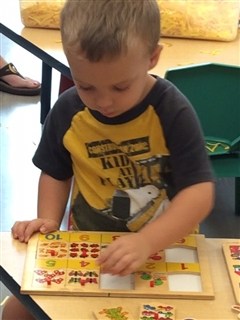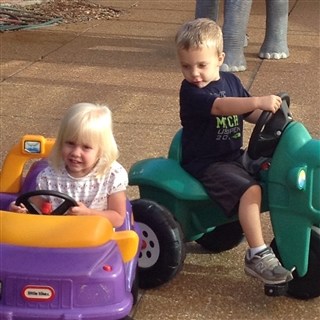Your child will begin to use objects as tools – using a spoon to chase food around on the plate. He may enjoy interactive games such as tickling and letting him tickle you and “talking” on the phone. Problem-solving skills are beginning to develop and your child begins to understand words and recognize the names of familiar objects. He will likely want to put most objects into his mouth.
- Push toys and walkers
- Shape sorters or plastic containers with balls and objects (develops eye-hand coordination, visual-spatial relationships)
- Balls
- Toy telephones
- Books – pop-ups, textures, pull tabs
- Blocks – a must have for stacking and knocking over
- Pail and shovel




